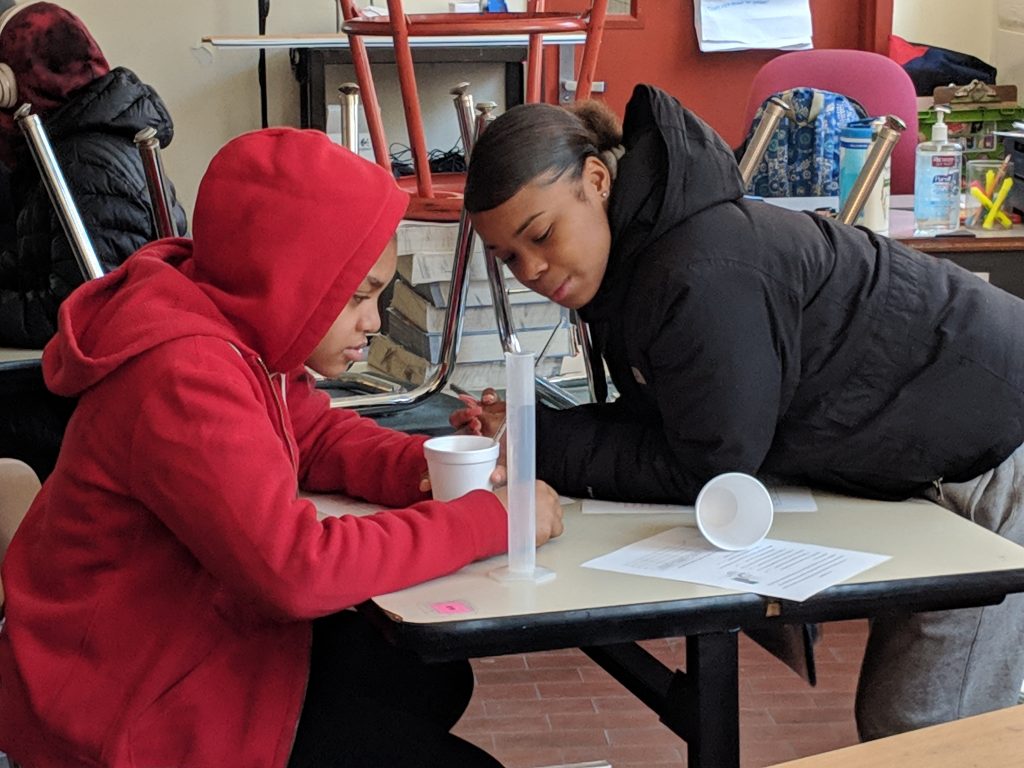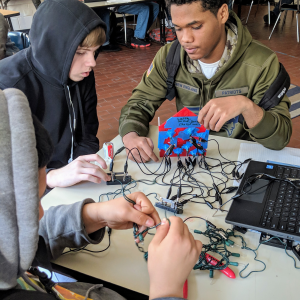In STEM education, teachers often find themselves face to face with jargon. Often, it can feel like there are new words every school year—which your administration is mandating you implement in your classroom. In this blog series, I will explain some of the most common STEM buzzwords, like Inquiry and Project-Based Learning, and illuminate their practicality.
While these strategies are certainly good ones, they can be daunting to attempt. The best part? You’re probably already doing it! So let’s walk through each, see some examples, and talk about implementation.
Inquiry
What is it?

Scientific inquiry is probably the most readily used STEM education buzzword. It is cited in the Next Generation Science Standards as when “students themselves engage in the practices and not merely learn about them secondhand.” NGSS states the importance of inquiry lies in the fact that “students cannot comprehend scientific practices, nor fully appreciate the nature of scientific knowledge, without directly experiencing those practices for themselves.
What does it look like?
Very simply, inquiry looks like students exploring. Students must be engaging with scientific tools and asking questions of their own.
What is it not?
Inquiry is not a free-for-all. But it also does not require students to have complete control over the content they learn. You can still teach the content required by your school/district/standardized test, and have inquiry happening in your classroom!
How can I try this tomorrow?
Do you have a cookbook or lab you’ve been using for years? Does your textbook have one? All you need to do to create an inquiry lab is shift a few things about the labs you already use! Try posting an objective and having students design an experiment. You can even lay out materials around the room that they can use to inspire them (one teacher I know calls this “seeding the pot”). If that feels too daunting, just have your class come up with your question together. You could start with a “has this ever happened to you?” question to get the students thinking about their own experiences. If students are asking their own questions, then inquiry is happening in your classroom.
Project-Based Learning (PBL)
What is it?
Project-Based Learning is another commonly-used phrase. One of my favorite resources for PBL is The Buck Institute. They have a ton of rubrics and tutorials that can help you develop true PBL lesson plans and activities. According to them, PBL is when “students work on a project over an extended period of time—from a week up to a semester—that engages them in solving a real-world problem or answering a complex question. They demonstrate their knowledge and skills by developing a public product or presentation for a real audience. As a result, students develop deep content knowledge as well as critical thinking, creativity, and communication skills in the context of doing an authentic, meaningful project.”
What does it look like?

PBL requires students to apply the knowledge they’ve gained about a subject to a somewhat long-term real-world project. Often the students must either use trial and error to succeed, or research how to gain the necessary skills to complete the assignment. Students should be independently motivated because they are engaging in something they care about.
What is it not?
Project based learning is not “doing a project.” It is not the dessert, but rather the main course (a metaphor used by the Buck Institute).
How can I try this tomorrow?
While Project-Based Learning does require extensive planning to do with fidelity, there are elements of PBL you can incorporate right away. First, I recommend visiting the “Get Started” section of the Buck Institute’s website. The readings, FAQ, and questionnaires will help you start thinking about how you can incorporate PBL as a major vehicle for understanding in your classroom. As you do your reading, try incorporating real-world problems into your everyday teaching. Try giving students a choice about how they “show their knowledge” (e.g. PowerPoint, skit, song, essay, painting, prototype, etc.). These are small steps towards true PBL, that will prepare you for the next step.
In the end, you’re probably already doing some of this! Next time your principal asks you to implement another buzzword, take it in stride and know it only takes a slight rearrangement or tweak to your lesson. You’ve got this!
See Savannah’s other implementations of the Breaking the Buzzwords Series:
Breaking the Buzzwords: 21-Century Skills and Design-Thinking
Breaking the Buzzwords: Modeling and Phenomenon-Based Learning







Leave A Comment